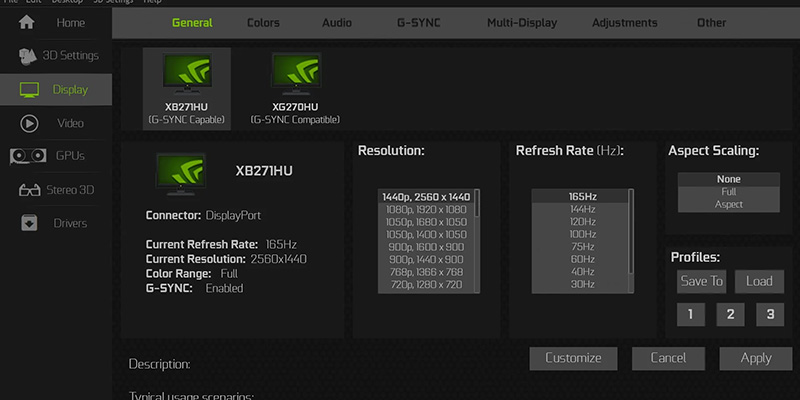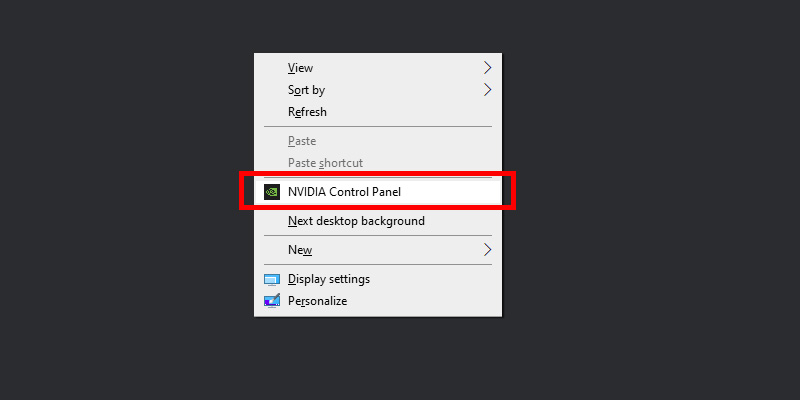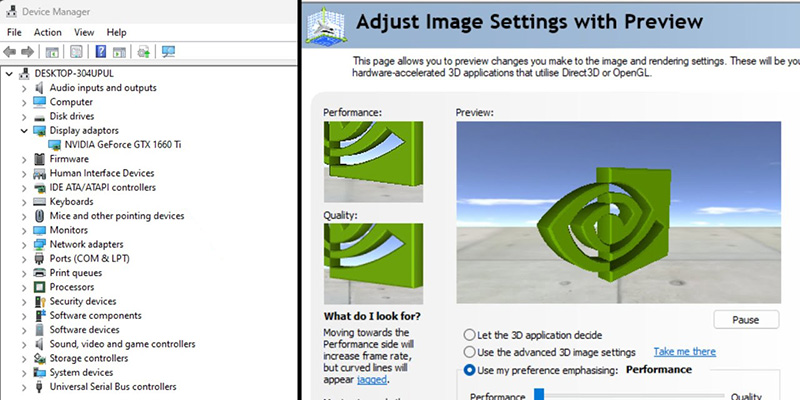At Boosting Ground, we understand that achieving peak performance in Valorant requires more than just skill – it demands optimal hardware configuration. This comprehensive guide will transform your Nvidia graphics card into a competitive advantage, delivering reduced input lag, higher frame rates, and enhanced visual clarity specifically tailored for Riot Games' tactical shooter.
Whether you're running a high-end RTX series card or working with older hardware, these precisely calibrated settings will unlock your system's full potential. Every configuration change has been tested and refined to provide measurable improvements in responsiveness and performance.

Essential Performance Optimization Checklist
Before diving into detailed explanations, here's your complete optimization roadmap:
Follow this checklist for immediate performance improvements. Each step builds upon the previous one for maximum effectiveness.
Nvidia Control Panel Configurations
- Update graphics drivers through GeForce Experience
- Configure Low Latency Mode to Ultra setting
- Set Power Management to maximum performance priority
- Disable Vertical Sync (unless utilizing G-Sync technology)
- Minimize or disable Image Sharpening
- Optimize Texture Filtering for high performance
- Disable Triple Buffering functionality
- Enable Threaded Optimization
- Adjust Digital Vibrance to 70-80% range
- Assign PhysX processing to your Nvidia GPU
Valorant In-Game Optimizations
- Select Fullscreen display mode exclusively
- Use your monitor's native resolution
- Set frame rate limits to unlocked or monitor-matched
- Reduce all quality settings to low
- Enable Improve Clarity feature
- Disable performance-impacting visual effects
- Minimize filtering and antialiasing
System-Level Enhancements
- Activate Nvidia Reflex when available
- Terminate unnecessary background applications
- Disable Windows gaming features that add latency
- Maintain fullscreen mode exclusively
Accessing Your Nvidia Control Panel
The Nvidia Control Panel serves as your command center for graphics optimization. To access this crucial interface:
Navigate to any empty area on your Windows desktop and right-click to open the context menu. Select "Nvidia Control Panel" from the available options.
Alternative Access Route:
If the right-click method doesn't display the Nvidia Control Panel option, access it through Windows' main Control Panel. Navigate to Control Panel, then Hardware and Sound, and finally select Nvidia Control Panel.
Troubleshooting Access Issues:
If neither method works, ensure your Nvidia drivers are properly installed and that Windows recognizes your graphics card. The Control Panel should appear in your system tray or Windows search results when functioning correctly.

Graphics Driver Optimization
Maintaining current graphics drivers is fundamental to Valorant optimization. Nvidia regularly releases game-specific optimizations that can provide significant performance improvements.
Step-by-Step Update Procedure
- Launch Nvidia GeForce Experience application
- Navigate to the Drivers section
- Select "Check for Updates" to scan for available driver versions
- Download and install any available updates immediately
- Restart your system to ensure changes take effect
Why Driver Updates Matter:
Each driver release contains specific optimizations for popular games, including Valorant. These updates can resolve compatibility issues, improve frame rate consistency, and reduce system latency. Outdated drivers often result in suboptimal performance and missed optimization opportunities.
3D Settings Configuration
The 3D Settings section provides the most impactful performance modifications. These configurations directly influence how your graphics card processes Valorant's rendering pipeline.

Global Settings Configuration
Global settings affect all applications and games on your system. These baseline configurations ensure optimal performance across your entire gaming library while providing special benefits for competitive shooters like Valorant.
| Setting | Recommended Value | Performance Impact |
|---|---|---|
| Image Sharpening | Disabled | High - Eliminates processing overhead |
| Ambient Occlusion | Off | High - Removes shadow rendering load |
| Anisotropic Filtering | Application-controlled | Medium - Lets Valorant handle filtering |
| Low Latency Mode | Ultra | Critical - Reduces input lag significantly |
| Power Management | Prefer maximum performance | High - Prevents GPU clock reduction |
| Vertical Sync | Off | Critical - Eliminates V-Sync lag |
Essential Global Configurations
Image Sharpening: Disable this feature completely for maximum performance. While minimal sharpening percentages are possible, any enabled sharpening introduces processing overhead that can affect competitive timing.
Ambient Occlusion: Set to Off. This visual enhancement adds realistic shadows but significantly impacts frame rates without providing competitive advantages in Valorant.
Anisotropic Filtering: Configure as Application-controlled. This allows Valorant to manage its own filtering requirements while preventing unnecessary system-level overrides.
Antialiasing Settings
- FXAA: Disabled
- Gamma Correction: Enabled
- Mode: Application-controlled
- Setting: Application-controlled
- Transparency: Disabled
These antialiasing configurations prevent your graphics card from performing redundant smoothing operations while allowing Valorant to handle its own anti-aliasing requirements.
CUDA Configuration: Set to utilize all available CUDA cores. This ensures maximum parallel processing capability for game-related calculations.
Low Latency Mode: Configure to Ultra for competitive play. This setting forces your graphics card to prepare frames just before display, minimizing the time between input and visual response.
Additional Critical Settings
Maximum Frame Rate: Leave disabled unless experiencing screen tearing issues. Setting artificial frame rate limits can introduce timing inconsistencies that affect competitive performance.
Multi-Frame Sampled AA (MFAA): Disable this feature. MFAA introduces additional processing steps that can create input lag in fast-paced competitive scenarios.
OpenGL Rendering GPU: Explicitly select your Nvidia graphics card. This prevents Windows from accidentally routing graphics processing to integrated graphics solutions.
Shader Cache: Enable this feature. Shader caching reduces loading times and prevents frame rate stutters when encountering new visual effects.
Texture Filtering Optimizations
- Anisotropic Sample Optimization: Enabled
- Negative LOD Bias: Allow
- Quality: High performance priority
- Trilinear Optimization: Enabled
These texture filtering settings prioritize performance over visual fidelity, providing smoother frame delivery without significant visual quality reduction.
Threaded Optimization: Enable this critical feature. Threaded optimization allows your graphics card to utilize multiple CPU cores for graphics processing, significantly improving performance on modern multi-core systems.
Triple Buffering: Disable this feature. Triple buffering introduces additional frame delays that can negatively impact input responsiveness in competitive gaming.
Virtual Reality Pre-rendered Frames: Set to 1. This minimizes the number of frames prepared in advance, reducing input lag even when not using VR applications.
Valorant-Specific Settings
Creating game-specific settings ensures Valorant receives optimal configurations while allowing other games to maintain their preferred settings.
Navigate to the Program Settings tab within 3D Settings, click "Add" to create a new program profile, select Valorant from the available applications list. If Valorant doesn't appear, use "Browse" to locate the Valorant executable file, then apply identical settings to those configured globally.
Benefits of Program-Specific Settings:
This approach allows you to maintain different optimization profiles for various games while guaranteeing that Valorant always receives its optimal configuration. Program-specific settings override global configurations, providing precise control over individual game performance.
Digital Vibrance Settings
Enhanced color saturation can provide competitive advantages in Valorant by improving enemy visibility and environmental contrast. Digital Vibrance adjustments affect color intensity without impacting performance.
Navigate to "Adjust desktop color settings" within the Nvidia Control Panel, locate the Digital Vibrance slider, adjust the setting to between 70-80%, then apply changes and test in-game visibility.
Competitive Advantages:
Increased digital vibrance makes character models more distinctive against environmental backgrounds. This enhancement is particularly valuable on maps with similar color palettes where enemy detection can be challenging. The 70-80% range provides noticeable improvement without creating unrealistic color distortion.
Fine-Tuning Recommendations:
Start with 75% digital vibrance and adjust based on personal preference and monitor characteristics. Some displays may require slightly higher or lower settings to achieve optimal enemy visibility without color oversaturation.
PhysX Processor Configuration
PhysX processing handles physics calculations and particle effects within games. Proper configuration ensures your Nvidia GPU manages these calculations efficiently rather than relying on less capable system components.
Access "Configure Surround, PhysX" from the main Nvidia Control Panel menu, locate the PhysX settings section, select your Nvidia graphics card from the processor dropdown menu. Avoid "Auto" settings that might default to CPU processing.
Performance Impact:
Dedicating PhysX processing to your graphics card reduces CPU workload and ensures consistent physics calculation performance. This configuration is particularly beneficial for maintaining stable frame rates during intense combat scenarios with multiple particle effects.
In-Game Settings
Complementing Nvidia Control Panel configurations with optimal in-game settings maximizes performance improvements and ensures consistent competitive performance.

Display Configuration
- Display Mode: Fullscreen exclusively – Windowed and borderless modes introduce additional system overhead and can cause frame rate inconsistencies
- Resolution: Use your monitor's native resolution to prevent scaling artifacts and maintain visual clarity
- Frame Rate Limit: Set to Unlocked for maximum responsiveness, or match your monitor's refresh rate if experiencing screen tearing
Graphics Quality Settings
All visual quality options should prioritize performance over aesthetics for competitive advantage:
| Setting | Recommended Value | Reason |
|---|---|---|
| Material Quality | Low | Reduces texture complexity without impacting visibility |
| Texture Quality | Low | Minimizes VRAM usage and improves frame consistency |
| Detail Quality | Low | Simplifies environmental geometry for better performance |
| UI Quality | Low | Reduces interface rendering overhead |
Visual Effect Configurations
- Vignette: Disabled – removes unnecessary screen edge darkening
- V-Sync: Disabled – prevents input lag introduction
- Antialiasing: None – eliminates processing overhead for edge smoothing
- Anisotropic Filtering: 1x – minimal filtering for maximum performance
- Improve Clarity: Enabled – enhances visibility without performance cost
- Experimental Sharpening: Disabled – prevents unnecessary processing
- Bloom: Disabled – removes bright light effects that can obscure enemies
- Distortion: Disabled – eliminates visual effects that can mask enemy movement
- Cast Shadows: Disabled – removes shadow rendering for improved frame rates
These configurations eliminate visual effects that provide minimal competitive advantage while consuming system resources. Each disabled feature contributes to higher frame rates and reduced input lag, creating measurable competitive improvements.
Additional System Optimization
Beyond Nvidia Control Panel and in-game settings, several system-level optimizations can further enhance Valorant performance.
Nvidia Reflex Configuration
Enable Nvidia Reflex within Valorant's graphics settings if your system supports this technology. Reflex reduces system latency by optimizing the communication between your graphics card and display, providing measurable input responsiveness improvements.
Background Application Management
Close all unnecessary applications before launching Valorant. Background processes consume system resources and can introduce frame rate inconsistencies or input lag spikes during crucial competitive moments.
Windows Gaming Feature Optimization
Disable Windows Game Mode and Xbox Game Bar through Windows settings. These features can introduce unexpected behavior and latency in competitive gaming scenarios. Access these settings through Windows Settings > Gaming and disable all automatic gaming enhancements.
Display Mode Consistency
Always maintain Fullscreen mode rather than Windowed or Borderless alternatives. Fullscreen mode provides your graphics card with exclusive access to display resources, ensuring maximum performance and minimal latency.
Performance Verification and Testing
After implementing these configurations, verify improvements through in-game testing and performance monitoring.
Testing Methodology
- Monitor frame rate consistency during typical gameplay scenarios
- Test input responsiveness in aim training exercises
- Verify visual clarity improvements in enemy detection scenarios
- Check for any stability issues during extended gaming sessions
- Reduced input lag for faster reactions
- Higher average frame rates
- Improved frame rate consistency
- Enhanced enemy visibility
- Better overall system responsiveness
- Screen tearing if V-Sync disabled
- Reduced visual quality in some areas
- May require monitor-specific adjustments
- Settings may need fine-tuning per system
Expected Improvements:
Properly configured systems should experience reduced input lag, higher average frame rates, improved frame rate consistency, and enhanced enemy visibility. These improvements directly translate to competitive advantages in Valorant's fast-paced tactical gameplay.
If experiencing unexpected behavior after configuration changes, revert settings incrementally to identify problematic configurations. Some systems may require slight modifications to achieve optimal performance based on specific hardware combinations.
"In competitive gaming, every millisecond matters. The difference between victory and defeat often comes down to who can react faster and see clearer."
This comprehensive optimization guide provides everything necessary to transform your Nvidia graphics configuration into a competitive advantage. Each setting has been carefully selected to maximize Valorant performance while maintaining system stability and visual clarity essential for competitive success.

